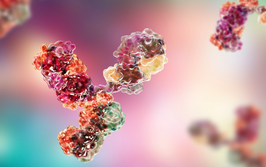The Imperfect Art of Biosimilars
Need a refresher on biosimilars? Here, we offer some key points to keep in mind when it comes to structure, function, and interchangeability.
Dave Li, Anna Baran | | 5 min read | Learning

A biosimilar, by definition, is a biologic that is highly similar – in structure and function(s) – to a registered reference biologic, with no clinically meaningful differences in terms of safety, purity, and potency. Biosimilars are regulated in a somewhat different context compared with chemically derived small molecule generics. Regulatory agencies mandate that biosimilars be exchangeable in clinical practice with a reference product. However, in practice, exchangeability has a specific definition that can be vague in meaning. Here, we discuss the concept of interchangeability for biosimilars and offer some operational perspectives on interchangeability considerations in the design and execution of preclinical developments leading to later phases of clinical studies on biosimilar products.
The structural basics
Biologics as functional biosimilars require corresponding structures. Many marketed biosimilars are, of course, proteins – monoclonal antibodies, enzymes, and so on. And a distinctive feature for functional biologics as proteins is correct folding into a tertiary (3D structure) after translation with the appropriate configurations of post-translational modifications (PTMs), such as glycosylation, ubiquitination, and methylation (1). In the cellular networks, there are more than 400 different types of PTMs that can impact many aspects of protein functions (2).Appropriate PTMs ensure correct folding and, therefore, how effectively surface receptors and/or other allosteric binding sites are exposed.
The scientific principles underlying the quality of a biosimilar mandate careful attention to PTM patterns to ensure correct protein folding for functionality – and that means the manufacturing processes must be well controlled (3, 4).
From a safety point of view, the biosimilar and reference product should have similar antigenicity and in vivo toxicity profiles; however, ultimately, adverse events in humans will not be known until first-in-human data for the biosimilar become available. Regardless, reliable in vitro structural and functional data are helpful in planning next development steps, including study designs and executions
The current systems of protein expression for industrial-scale manufacturing are based on imperfect science, which makes the manufacturing process for biosimilars as much an art as a solid science. In particular, there is a lack of understanding when it comes to the underlying cellular and molecular mechanisms of action for PTMs because these are enzyme-mediated and highly dynamic processes.
Folding patterns also determine correlation to other biological characteristics, such as toxicity profiles. Unlike small molecule generics, biological drugs need to interact with the tissue and cells of human systems by binding to cell receptors to elicit a downstream therapeutic effect. This is fundamentally different to the classic pharmacodynamic model of absorption, distribution, metabolism, and excretion model. The biological reactions, both in potential side effects and therapeutic responses from biosimilars, are multi-systemic and, therefore, difficult to predict from pre-clinical animal models. As a result, reactions can be highly complex depending on the nature, administered routes, strength, and dosage form (5).
What regulators want
Current EMA and FDA guidelines stipulate that biosimilars should be interchangeable with their reference product, without further intervention from prescribing physicians. The FDA has been clear about the scientific risks and benefits of interchangeability. A biosimilar can be expected to produce the same clinical result as the reference product in any given patient of the target population. And for a product administered to a patient during a treatment course, the risk in terms of safety or diminished efficacy of alternating or switching between use of the biosimilar and its reference product should not be greater. The FDA has developed standards for biosimilars, but these can be subject to different interpretations in clinical development (6, 7, 8, 9).
In the US, the traditional approval pathway for a biosimilar is a 351(k)-marketing application, which should include, among other specific considerations, information demonstrating structural biosimilarity and functional interchangeability based on data derived from analytical, animal, and clinical studies demonstrating that the biological product is “highly similar.” The pre-clinical studies should include structural and functional analyses. Measuring protein folding is also technically feasible with advanced methodologies.
Animal models are used to determine toxicity, toxicity profiles, and initial dosing. Clinical studies, including early studies and the assessment of immunogenicity and pharmacokinetics or pharmacodynamics, should lend credible support to demonstrate safety, purity, and potency in one or more appropriate conditions of use for which the reference product is licensed.
Extrapolated indications for biosimilars are a concern if there are no head-to-head comparison data with a reference product.
Reaching consensus
The “no clinically meaningful difference” aspect of biosimilars should be a consensus reached by a collective group of stakeholders. However, from a statistical perspective, data supportive of a null hypothesis in randomized trials with appropriate clinical or patient outcomes suggest that claims of biosimilarity are, at least, highly likely.
Every effort should be made to ensure complete sets of data are collected and used to justify downstream clinical developments for biosimilars and to support and facilitate future marketing applications. With the right pre-clinical analytical data, it can be reasonable to assume that a biologic will be highly similar to its reference product in structure, and therefore safety, purity, and potency, before entering later human trials.
- S Ramazi et al., “Posttranslational modifications in proteins: resources, tools and prediction methods,” Database, (2021). DOI: 10.1093/database/baab012
- B Atsavapranee et al., “Fundamentals to function: Quantitative and scalable approaches for measuring protein stability,” Cell Syst., 16;12, 547-560 (2021). DOI: 10.1016/j.cels.2021.05.009
- P Kurki et al., “Regulatory Evaluation of Biosimilars: Refinement of Principles Based on the Scientific Evidence and Clinical Experience,” BioDrugs, 36, 359-371 (2022). DOI: 10.1007/s40259-022-00533-x
- P Declerck et al., “The Language of Biosimilars: Clarification, Definitions, and Regulatory Aspects,” Drugs, 77, 671-677 (2017). DOI: 10.1007/s40265-017-0717-1
- SK Niazi, “Biosimilars: A futuristic fast-to-market advice to developers,” Expert Opin Biol Ther., 22, 149-155 (2022). DOI: 10.1080/14712598.2022.2020241
- FDA, “Guidance: Scientific Considerations in Demonstrating Biosimilarity to a Reference Product,” (2015). Available at https://bit.ly/35mdtJc
- FDA, “Guidance: Considerations in Demonstrating Interchangeability With a Reference Product Guidance for Industry,” (2019). Available at https://bit.ly/2VyxVWp
- FDA, “Guidance: Development of Therapeutic Protein Biosimilars: Comparative Analytical Assessment and Other Quality-Related Considerations Guidance for Industry,” (2019). Available at https://bit.ly/2Fhl40n
- FDA, “Guidance: Clinical Pharmacology Data to Support a Demonstration of Biosimilarity to a Reference Product,” (2016). Available at https://bit.ly/43IL3aM
KCR Principal Consultant
KCR Chief Medical Officer



















